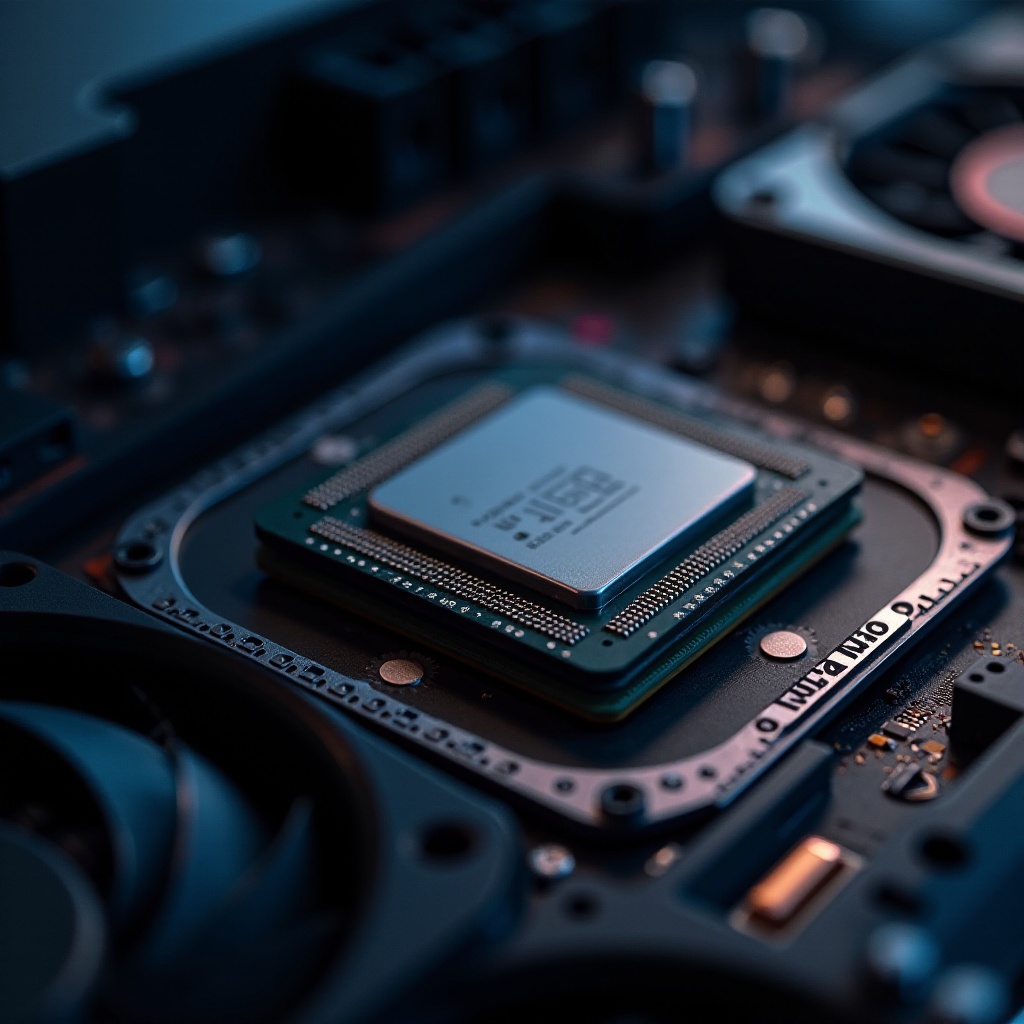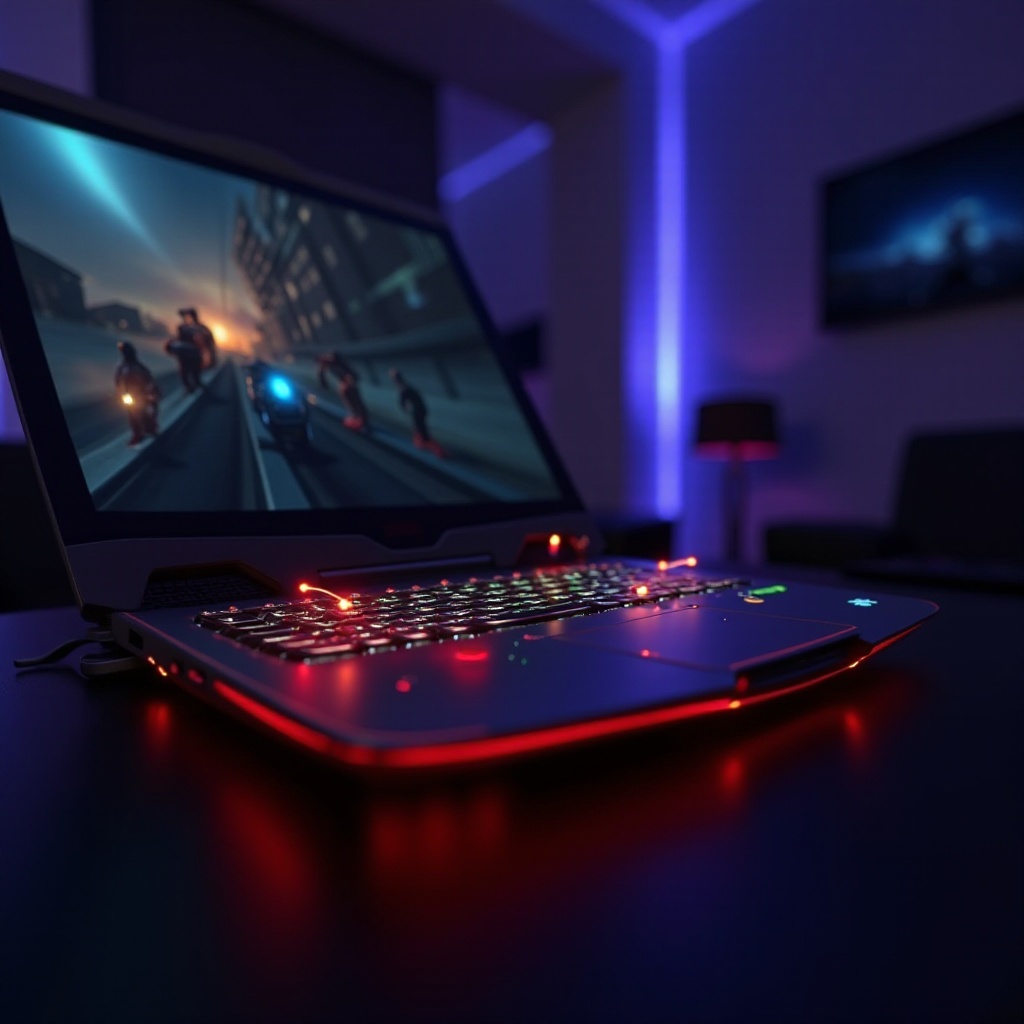Introduction
Gaming on laptops is an immensely popular trend due to the convenience and high performance these machines offer. However, high-performance gaming on laptops often leads to high CPU core temperatures. When you’re engrossed in an intense gaming session, you might notice your laptop’s CPU core temp hitting 88°C or higher. This can raise concerns about the safety and longevity of your device.
Understanding the implications of a CPU core temperature of 88°C while gaming is crucial for gamers. You need to ensure your laptop performs optimally without risking damage due to overheating. In this article, we will discuss the causes of high CPU temperatures in gaming laptops, evaluate the safety of running at 88°C, and provide tips and solutions to manage and maintain safe temperatures.

Understanding CPU Core Temperature
CPU core temperature refers to the heat generated by the processor’s cores during operation. CPUs are the heart of computing devices, executing commands and performing complex calculations. As a result, they generate significant amounts of heat that need to be dissipated to prevent damage and ensure efficient operation.
Various internal and external factors affect CPU core temperatures. Efficient heat dissipation mechanisms like heat sinks, fans, and thermal paste are integral to maintaining optimal temperatures. Monitoring these temperatures becomes particularly important in gaming laptops where high performance and intensive processes are the norms, leading to elevated thermal readings.
Causes of High CPU Temperatures in Gaming Laptops
Several factors contribute to high CPU temperatures in gaming laptops. Here are some of the primary causes:
-
High Performance Demand: Gaming is resource-intensive, pushing the CPU to its limits. The execution of complex graphics, extensive computations, and interactive elements leads to a substantial increase in temperature.
-
Poor Ventilation: Inadequate airflow within the laptop can cause heat buildup. Dust accumulation over time can obstruct the vents, further exacerbating the issue.
-
Thermal Paste Degradation: Thermal paste is crucial for transferring heat from the CPU to the heat sink. Over time, it can dry out and lose its efficacy, leading to inefficient heat transfer and higher temperatures.
-
Overclocking: Many gamers overclock their CPUs to achieve better performance. However, pushing the CPU beyond its recommended limits can result in excessive heat generation.
-
Ambient Temperature: The environment where you use your laptop plays a role. High ambient temperatures can lower the efficiency of cooling mechanisms, leading to higher CPU core temperatures.
Understanding these factors helps in identifying and mitigating the risk of overheating while ensuring the longevity and efficient performance of your gaming laptop.

Is 88°C Safe for a Laptop CPU During Gaming?
Now, let’s address the crux of the matter – is a CPU core temp of 88°C safe during gaming? Generally, CPUs are designed to handle high temperatures. Manufacturers specify a maximum safe temperature for their CPUs, often called T-Junction or T-Junction Max. For many modern CPUs, this range is typically between 100°C to 105°C.
Running your CPU at 88°C, especially during intensive gaming sessions, can be considered within the acceptable range, but it is on the higher side. While occasional peaks at these temperatures are normal, sustained exposure can lead to reduced performance and potential long-term damage. Regular exposure to high temperatures can also accelerate wear and tear on internal components, potentially reducing the lifespan of your machine.
Therefore, while 88°C isn’t immediately dangerous, it is vital to take steps to manage and reduce CPU temperatures to prolong the life and maintain the performance of your laptop.

Symptoms of Overheating to Watch Out For
Recognizing the symptoms of an overheating CPU is crucial. Here are some common signs that your laptop might be overheating:
-
Throttling and Slow Performance: If you notice your laptop slowing down intermittently during gaming sessions, it might be due to the CPU throttling its performance to manage the heat.
-
Unexpected Shutdowns: A laptop that frequently shuts down unexpectedly or restarts can indicate significant overheating, triggering the built-in protective mechanisms.
-
Fan Noise: While fans running during gaming is normal, exceptionally loud and constantly running fans are a sign that your laptop is struggling to dissipate heat.
-
Physical Heat: If the laptop feels excessively hot to touch, especially around the keyboard or underneath, it’s a clear sign of overheating.
-
Graphical Glitches and Artifacts: Overheating can cause graphical issues, resulting in screen glitches or artifacts during gaming.
Taking note of these symptoms can help you take timely preventative measures to avoid permanent damage to your laptop.
Tips for Maintaining Safe CPU Temperatures While Gaming
Maintaining safe CPU temperatures is essential for ensuring the longevity and performance of your laptop. Here are some effective tips:
-
Regular Cleaning: Periodically clean the vents and internal components of your laptop to prevent dust buildup that can obstruct airflow.
-
Optimize Gaming Settings: Lowering the graphics settings in games can reduce the workload on your CPU, thereby lowering the temperature.
-
Proper Ventilation: Ensure your laptop is used on a hard, flat surface to enhance airflow. Using it on soft surfaces like beds or laps can block vents.
-
Use Cooling Pads: Invest in a good cooling pad designed for laptops. These provide additional fans and better surface area for heat dissipation.
-
Update Drivers: Keep your drivers, especially graphics and chipset drivers, up to date for optimal performance and heat management.
-
Ambient Environment: Use your laptop in cooler surroundings or a well-ventilated room to aid in maintaining a lower operating temperature.
-
Monitor Background Processes: Close unnecessary background applications that can increase CPU load and heat generation during gaming.
Implementing these tips can significantly help in maintaining safer CPU temperatures and enhancing the overall performance of your gaming laptop.
Recommended Cooling Solutions for Gaming Laptops
Investing in cooling solutions can make a substantial difference in managing CPU temperatures. Here are some recommended solutions:
-
Cooling Pads: A high-quality cooling pad can provide an extra layer of cooling through multiple fans that aid in effective heat dissipation.
-
Laptop Stands: Using a laptop stand elevates the device, improving airflow underneath and reducing heat accumulation.
-
External Fans: External USB fans can be placed near the laptop to provide additional cooling.
-
Thermal Paste: Reapplying thermal paste periodically can significantly improve heat transfer from the CPU to the heatsink.
-
Internal Cleaning: If you’re comfortable with opening your laptop, periodic internal cleaning focusing on removing dust from the cooling fans and heat sinks can be beneficial.
-
Professional Maintenance: For thorough maintenance, consider professional cleaning services, including thermal paste reapplication and internal component checks.
By employing these cooling mechanisms, you can ensure that your gaming laptop operates at optimal temperatures, reducing the risk of overheating.
Software and Tools for Monitoring CPU Temperature
Monitoring your CPU temperature is critical for proactive heat management. Several reliable software tools can help you track CPU temperatures:
-
HWMonitor: A popular tool that provides detailed information about various system temperatures, voltages, and fan speeds.
-
Core Temp: Specifically designed to monitor CPU temperature, Core Temp offers real-time readings, load percentages, and logging options.
-
SpeedFan: In addition to temperature monitoring, SpeedFan allows you to control fan speeds for better heat management.
-
MSI Afterburner: Commonly used by gamers, this tool provides monitoring and overclocking options for both CPU and GPU.
-
Real Temp: Lightweight software that monitors temperatures and ensures your CPU stays within safe limits during gaming sessions.
Using these tools enables informed decisions on managing and reducing CPU temperatures effectively.
Conclusion
Managing the CPU core temp of 88°C in laptop gaming is essential for the longevity and performance of your device. While 88°C is within the operational limit of most modern CPUs, it is crucial to monitor and manage these temperatures actively. Implementing regular maintenance, optimizing settings, and using cooling solutions can drastically reduce the risk of overheating.
By staying vigilant about the symptoms of overheating and employing the recommended solutions, you can maintain a safe and efficient gaming environment. Proper heat management not only enhances your gaming experience but also extends the lifespan of your valuable gaming laptop.
Frequently Asked Questions
What is a safe CPU temperature for a gaming laptop?
A safe CPU temperature for a gaming laptop typically ranges between 70°C to 85°C during intensive tasks. While brief peaks above this range are normal, sustained high temperatures should be avoided to ensure the longevity of the laptop.
How can I prevent my laptop from overheating while gaming?
To prevent overheating, ensure proper ventilation, keep the laptop clean, use cooling pads, optimize gaming settings, and monitor temperatures. Regularly updating drivers and closing unnecessary background processes also help in maintaining safe CPU temperatures.
What are the signs that my laptop is overheating?
Common signs of an overheating laptop include performance throttling, unexpected shutdowns, loud fan noise, physical heat, and graphical glitches. Noticing these symptoms early can help in taking appropriate measures to manage and reduce CPU temperatures effectively.
